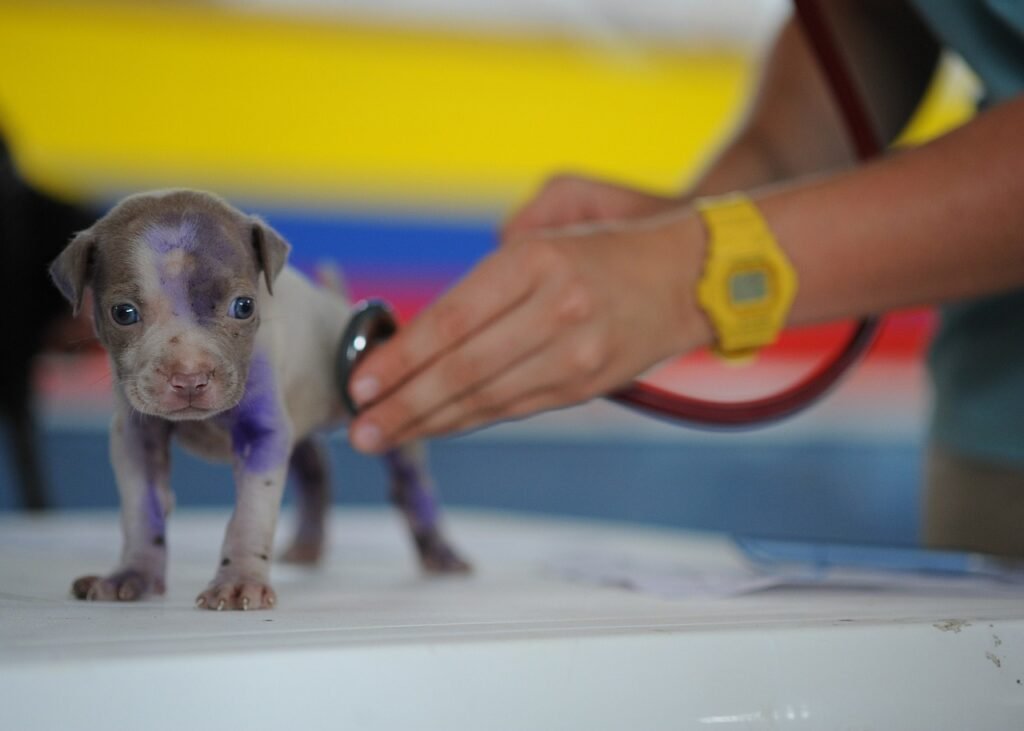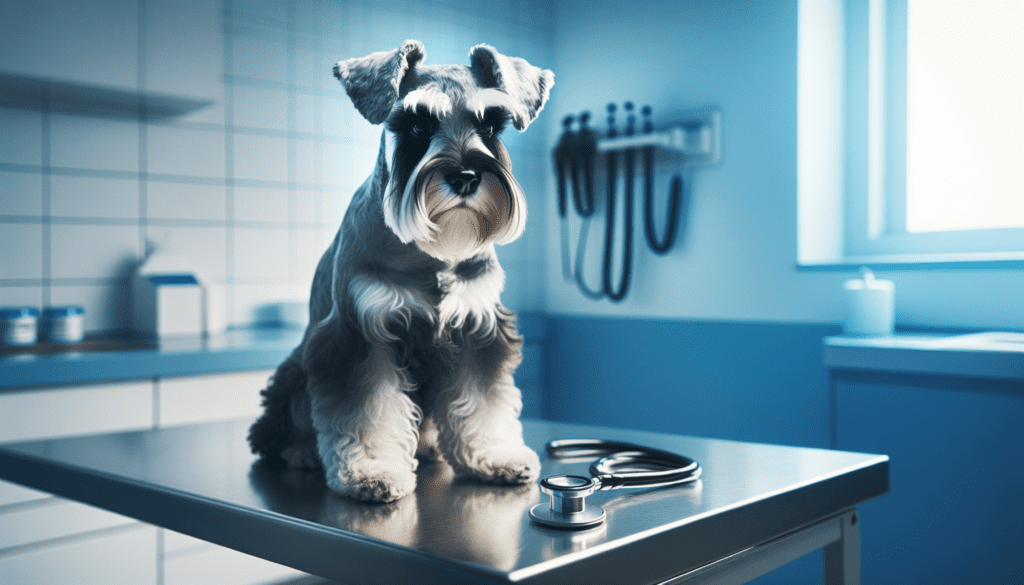If you’ve ever experienced the sight of your dog trembling and panicking at the mere thought of going to the vet or undergoing a medical procedure, you know how challenging it can be to manage their anxiety. But fear not, there are strategies you can implement to help your furry friend feel calmer and more comfortable during these stressful moments. From desensitization techniques to using calming aids, this article will explore some effective approaches that can make vet visits or medical procedures less daunting for your beloved pooch.
Preparation
Preparing your dog for a vet visit can greatly reduce their anxiety and make the experience more positive for everyone involved. Introducing your dog to the vet clinic before their appointment can help familiarize them with the environment and reduce stress. You can schedule a visit just for a quick introduction, allowing your dog to meet the staff and explore the clinic without any medical procedures taking place.
Creating positive associations with vet visits is another effective strategy. Start by taking your dog to the clinic for non-threatening visits, such as weigh-ins or nail trims, and reward them with treats and praise throughout the process. This will help your dog associate the clinic with positive experiences and build trust with the veterinary staff.
Desensitization and counterconditioning training can be useful in reducing your dog’s anxiety. This involves gradually exposing your dog to situations that trigger their anxiety, such as handling or medical procedures, and pairing them with enjoyable experiences or rewards. By gradually increasing their tolerance and changing their emotional response, you can help your dog become more comfortable with vet visits and medical procedures.
Calming Techniques
During a vet visit, calming techniques can help ease your dog’s anxiety and keep them more relaxed. Massage and gentle touch can be very soothing for dogs, as it helps promote relaxation and lowers stress levels. You can gently stroke your dog’s back or perform light massages on their neck and shoulders to help them feel more at ease.
Calming pheromones, like Adaptil for dogs, can also help create a calming atmosphere. These synthetic versions of the pheromone released by mother dogs to comfort their puppies can be sprayed or diffused in the clinic or applied to your dog’s collar or bedding. They can help reduce anxiety and make your dog feel more secure during their visit.
Playing soft music or white noise in the background can also have a calming effect on dogs. The rhythmic sounds can block out unfamiliar noises and provide a sense of familiarity and comfort. Classical music or specially designed relaxation tracks for pets can be played through portable speakers or provided by the vet clinic.

This image is property of pixabay.com.
Distraction Techniques
Distraction techniques can be effective in redirecting your dog’s focus away from their anxiety and onto something more positive. Treats and food puzzles are great tools for keeping your dog occupied and mentally engaged during their vet visit. You can offer treats as rewards for good behavior or provide food puzzles that require problem-solving skills, helping to distract your dog and keep them entertained.
Interactive toys, such as puzzle toys or toys that dispense treats, can also keep your dog mentally stimulated and engaged. These toys can be brought along to the vet visit and used as a distraction during waiting times or procedures. They provide an enjoyable and familiar activity for your dog, helping to alleviate their anxiety.
Training exercises can also serve as a helpful distraction during vet visits. Simple obedience commands like sit, stay, or lie down can be practiced in the waiting area or exam room. Not only do these exercises keep your dog focused on positive behaviors, but they also reinforce their training and boost their confidence in unfamiliar situations.
Muzzle Training
While many dogs may not require a muzzle during vet visits, it can be a valuable tool for certain situations or for dogs that may become stressed or fearful. Muzzle training should be approached gradually and with positive reinforcement to ensure your dog associates the muzzle with positive experiences.
Start by introducing the muzzle to your dog in a neutral and non-threatening environment. Allow them to sniff and investigate the muzzle while offering treats and praise. Gradually progress to touching the muzzle to their face, rewarding them for remaining calm and relaxed. Finally, gradually work up to having your dog wear the muzzle for short periods of time, rewarding them regularly throughout the process.
Positive reinforcement is key during muzzle training. Reward your dog for any signs of acceptance or relaxation while wearing the muzzle, and gradually increase the duration of wear. This will help your dog feel more comfortable and less anxious about wearing a muzzle during vet visits or medical procedures.

This image is property of pixabay.com.
Medication
If your dog’s anxiety is severe or if other strategies have been unsuccessful, discussing the possibility of medication with your veterinarian may be beneficial. Consulting with a veterinarian who specializes in behavior or anxiety can help determine the appropriate medication for your dog’s needs.
Prescription medications, such as anti-anxiety medications or sedatives, can be used to help reduce your dog’s anxiety during vet visits. These medications can help calm your dog and make the experience less distressing. It is important to follow your veterinarian’s instructions and dosage recommendations carefully when using prescription medications.
Natural remedies and supplements can also be considered as an alternative or complementary option to prescription medications. Products like CBD oil or herbal supplements specifically formulated for anxiety in dogs may provide some relief. However, it is crucial to consult with your veterinarian before using any natural remedies, as not all products are safe or effective for every dog.
Communication with Veterinary Staff
Proper communication with the veterinary staff is essential in ensuring that your dog’s anxiety is understood and addressed during their visit. Inform the vet or vet staff about your dog’s anxiety beforehand, providing them with a clear understanding of your dog’s triggers and any specific concerns you may have. This will allow the vet to plan and execute the visit in a manner that minimizes stress for your dog.
Request a calm and gentle approach from the veterinary staff when it comes to handling and interacting with your anxious dog. It is important that the staff is aware of the impact their words, tone, and actions can have on your dog’s stress levels. A gentle and understanding approach can go a long way in helping your dog feel safer and more at ease.
Don’t be afraid to ask for breaks during procedures if you notice that your dog is becoming overwhelmed or stressed. A short pause in the procedure can give your dog a chance to calm down and regroup, allowing them to feel more comfortable throughout the rest of the visit.

This image is property of pixabay.com.
Appropriate Handling Techniques
Using gentle handling and restraint techniques is crucial in minimizing your dog’s anxiety during vet visits. Instead of resorting to physical force or excessive restraint, veterinary staff should prioritize fear-free techniques that prioritize your dog’s emotional well-being. These techniques focus on creating a calm and positive environment, respecting the dog’s boundaries, and using gentle encouragement.
Minimizing physical force and avoiding rough handling can help prevent your dog from becoming more anxious or fearful during the visit. Techniques such as minimal restraint, slow and gentle movements, and using treats or praise as rewards for cooperation can make the experience more pleasant for your dog.
Fear-free techniques, which involve using positive reinforcement and creating a stress-free environment, should be employed whenever possible. These techniques prioritize the emotional well-being of the dog and aim to build trust and cooperation during medical procedures. Your vet clinic should have staff trained in fear-free handling techniques to ensure your dog’s comfort and well-being.
Creating a Comfortable Environment
Creating a comfortable environment at the vet clinic can have a significant impact on reducing your dog’s anxiety. Soft bedding or blankets can provide a cozy and familiar spot for your dog to relax during their visit. Bringing along a favorite blanket or bed from home can provide a sense of security and comfort.
Familiar smells and toys can also help your dog feel more at ease. Bring along a familiar toy or item that carries their scent to provide a comforting reminder of home. This can help reduce their stress levels and provide a sense of familiarity in an otherwise unfamiliar environment.
Reducing noise and bright lights can also contribute to a more comfortable environment for your dog. Bright lights and loud noises can be overwhelming for some dogs, so requesting dimmer lights and minimizing unnecessary noise can help create a calmer atmosphere. This can be particularly helpful during procedures or exams where your dog may already be more stressed.

Behavioral Modification
Working with a professional dog trainer can be incredibly beneficial in managing your dog’s anxiety during vet visits. These trainers specialize in behavior modification techniques and can help identify the triggers that cause your dog’s anxiety in the vet clinic. They can then develop a customized training plan to address these triggers and teach your dog relaxation and coping skills.
Identifying and addressing triggers is a crucial part of managing dog anxiety. By understanding what specifically triggers your dog’s anxiety, you can develop strategies to help them cope. For example, if your dog becomes anxious when approaching the vet clinic, you can work with a trainer to gradually desensitize them to the area, pairing it with positive experiences and rewards.
Teaching relaxation and coping skills is another important aspect of behavioral modification. Through training exercises, such as teaching your dog to settle on command or teaching them relaxation techniques like deep breaths or focusing on a specific task, you can help your dog better manage their anxiety during vet visits.
Post-Visit Support
Providing post-visit support for your dog is essential in ensuring their overall well-being and continued comfort after a vet visit. Rewarding your dog after a successful visit with treats, praise, and extra attention can help reinforce positive associations with the vet clinic and encourage them to view future visits as less stressful.
Providing extra attention and comfort following a vet visit can help your dog recover from any stress or anxiety they may have experienced. Spending quality time with them, engaging in calming activities like gentle play or cuddling, and offering soothing words and reassurance can help soothe their nerves and improve their emotional well-being.
Monitoring your dog for any signs of distress after a vet visit is also important. Changes in behavior, loss of appetite, or excessive lethargy can be indicators that your dog is still feeling anxious or stressed. If you notice any concerning signs, contact your veterinarian for further guidance and support.
Managing your dog’s anxiety during vet visits or medical procedures requires patience, understanding, and a comprehensive approach. By implementing these strategies, you can help your dog feel more comfortable and make vet visits a positive experience for both you and your furry friend.


